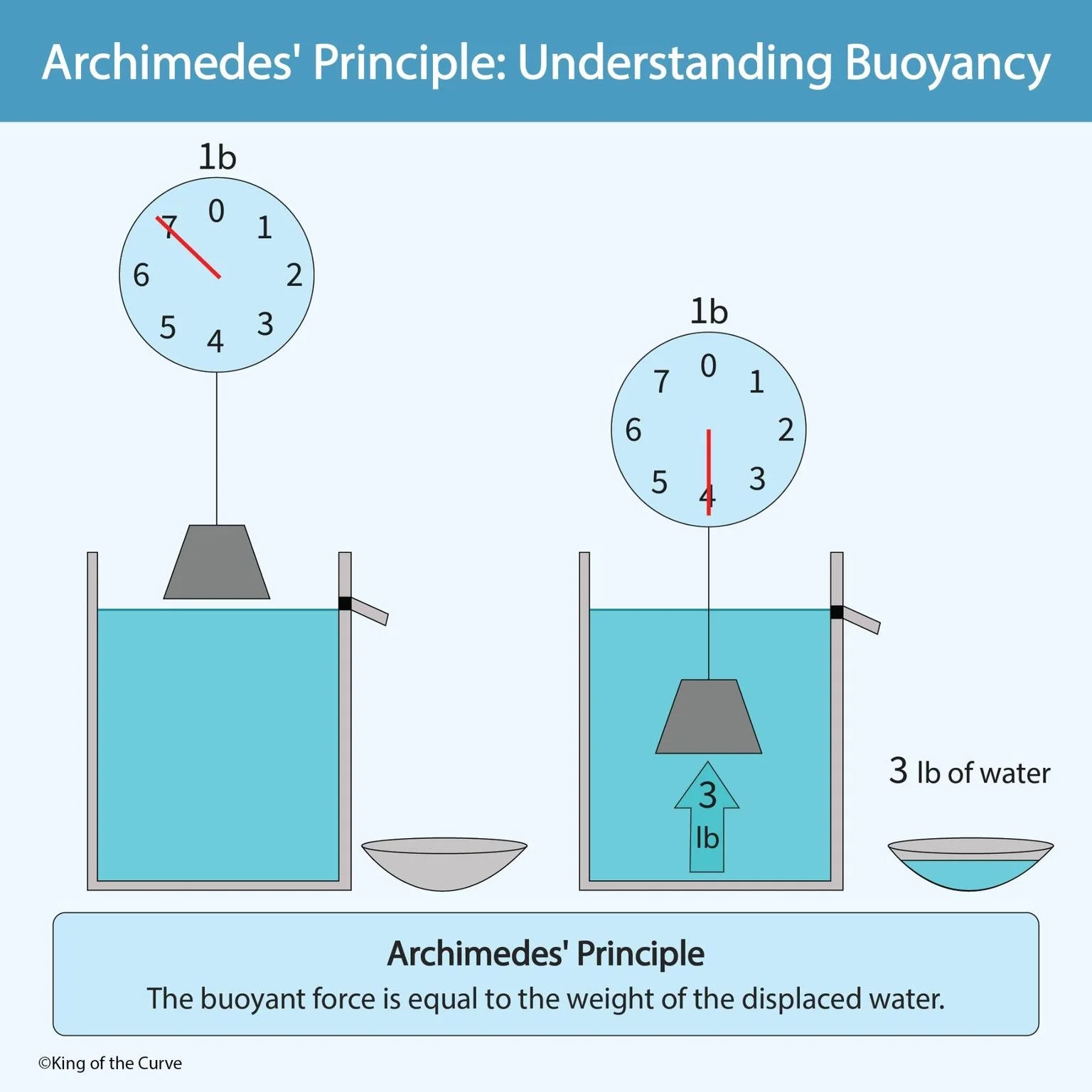🌊 Archimedes’ Principle: The Physics of Buoyancy (MCAT Visual)
When you're standing in a pool and feel lighter, you’re experiencing one of the most fundamental principles in fluid mechanics—Archimedes’ Principle. The MCAT frequently tests this concept in the Physics section, especially when interpreting forces in fluid scenarios.
⚖️ What Is Archimedes’ Principle?
“The buoyant force on an object submerged in a fluid is equal to the weight of the fluid it displaces.”
This means:
The more fluid an object pushes out of the way (displaces),
The more upward force (buoyancy) it experiences.
🧪 MCAT-Relevant Explanation
🔹 Key Variables:
Buoyant Force (F<sub>b</sub>) = ρ × V × g
Where:ρ = density of fluid
V = volume displaced
g = gravitational acceleration
🔁 Visual Breakdown of the Forces
| Scenario | Description | Key Point |
|---|---|---|
| Object outside water | Reads 7 lb on scale | No buoyant force |
| Object submerged in water | Reads 4 lb on scale, displaces 3 lb of water | Buoyant force = 3 lb |
| Water overflow | Collected overflow weighs 3 lb | Confirms Archimedes’ Principle |
✅ Buoyant force = weight of displaced fluid
✏️ MCAT-Style Tip
Sample Question:
A 7 lb block is suspended in water. It reads 4 lb on the scale. What is the buoyant force?
Answer:
Buoyant force = 7 lb – 4 lb = 3 lb
💡 This means 3 lb of fluid was displaced—match it with fluid density if needed!
🧠 Strategy Summary
Always subtract apparent weight from true weight to find buoyant force
Connect volume displacement to fluid mass (especially in water-based problems)
Archimedes is often paired with Pascal’s Principle and fluid pressure
✅ Final Takeaways
Archimedes’ Principle is all about the balance between weight and displacement
It’s tested on the MCAT in fluid mechanics, hydrostatics, and pressure problems
Knowing F<sub>b</sub> = ρVg helps link physics and math quickly
📲 Master Buoyancy and Beyond with KOTC
From fluid mechanics to circular motion, King of the Curve simplifies science with adaptive learning tools, daily MCAT drills, and gamified flashcards.
👉 Access the Free App
👉 See Visuals Like This Daily
👉 Answer Fluid Dynamics QOTDs
Frequently Asked Questions (FAQs)
-
Aim for 4-6 focused hours, ensuring you incorporate breaks to avoid burnout.
-
Practice mindfulness techniques, take practice exams under realistic conditions, and maintain a balanced lifestyle.
-
Set short-term goals, seek support from mentors, and reward yourself for small achievements.
-
Regular exercise improves focus, reduces stress, and enhances overall mental clarity.
-
KOTC offers personalized learning tools, gamification features, and adaptive question banks to help students stay on track without burnout.


